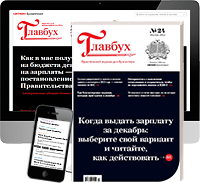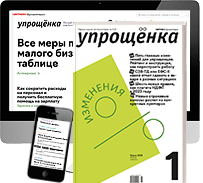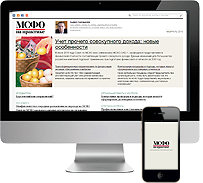
Vero VISI 2020.1 | 3.3 GB
Major VISI Modelling developments include a new tool to manage multiple instances of the same geometry, component revision management, new surface modelling tools, tolerance application for drilling, enhanced tool/motion kinematics and updated CAD translators.
As part of a larger synergy project for reverse engineering and casting, VISI 2020.1 introduces an extended direct interface to multiple portable measuring arms and Leica scanning devices from Hexagon. This, together with the enhanced dedicated module, provides a reverse engineering solution, as well as the ability to generate casting and stock models from VISI's existing modelling and machining environment.
VISI Product Manager Marco Cafasso says it means that a points cloud can be loaded either directly or indirectly, and the relative mesh can be created by setting different options for refining and smoothing. "Also, surfaces can be created automatically or semi-automatically by extracting different key geometrical references from the refined mesh. And scan data, stock or reference casting mesh models can easily be aligned to the original geometrical CAD model using dedicated commands to allow comparisons, gap analysis and optimised toolpath processes."
Ejector pin labelling for plastic mold design
The new ejector pin labelling functionality, which has been specifically produced for plastic mold designers, enables all the ejector pins in a mold design project to be identified in a table by a user-defined label. "This feature simplifies the maintenance process of the mold itself where one or more ejector pins need to be replaced. It easily identifies any ejector pin for maintenance purposes, and updates it if it needs replacing."
Conformal cooling channels for plastic mold design
VISI 2020.1 introduces a function for advanced sketching of conformal cooling channels. It allows the use of wireframe circuits, previously created in CAD, along with selecting predefined or user sections, and automatically creates the conformal channels to form the desired cooling circuit. "It's also possible to edit those channels, even after subtraction from the mold insert," says Marco Cafasso. "All the information defined on the conformal cooling during the design phase are automatically managed by VISI Flow's thermal analysis. And the Flow thermal analysis itself has also been enhanced to provide a graphical temperature display on a dynamic section on the inserts." The result is a simplified process and time saving of the mold design and Flow analysis.
Pressure pad management for progressive die design
The blanking process has been enhanced, to set the faces on the model affected by the pressure pad, by simply defining the relative force to apply. This allows the material to flow, based on the applied force on the pressure pad.
He says users can also set constraints to simulate the effect of a uniformly distributed blank holder force. "In fact, it's possible to define a friction value and the force value to be applied for the blanking phase. This leads to a more accurate blanking process, which gives additional support to the user during the design phase of the die."
Progressive Die design
Upgrades to the new part unfolding technology provides the ability to work directly on the original solid model, supports blanking functionality, and manages parts with non-linear bends.
The sheet metal part recognition provides an improved graphical representation of the part, analysed by identifying bends, planar faces and features. Different face types can be set, to be considered for the blanking process. The new technology allows linear blank unfolding and flange unfolding to be combined into a single functionality. With linear bends, the system will unfold using the linear bend unfolding technology, while flange areas unfold using the FEA unfolding solution. And coining faces can also be unfolded as part of the same process.
The major advantage of the new technology is the associativity provided with the original model during the die design process. It allows the original part to be modified, and changes to be automatically propagated on the banked part. This new feature allows all the linked parts to be rebuilt in reference to a modification done to the original part. This is extremely useful because it updates all the studied parts in a single click, and is a major time saving in the design and modification phase of a progressive die.
Stampack Xpress Interface
VISI 2020.1 provides a direct interface to Stampack Xpress, for die simulation.
Enhanced Reverse and Casting
The Reverse module has been enhanced with additional functionalities for both Reverse and Casting processes, including new features to support the scanning to surfaces generation.
Features such as radius generation from mesh, plane generation, adapt mesh on boundary, and sectional curves on mesh, provide greater benefit for the reverse process from point scanning to solid model generation. A new Best Fit feature aligns a stock model to the final solid model by setting tolerances on different faces. This is extremely useful for the casting market, as it allows the cast model to be scanned, achieving a best fit alignment with the final geometry, producing an optimised toolpath with reduced machining time. The stock model can then also be used for machining simulation purposes.
Compare Feature
The Compare feature has been improved to provide an enhanced graphical evaluation of the results, and to display distances between the scanned model and the final solid model. The enhancements achieved provide quality improvements to both processes as well as time saving from the scanning to the manufacturing process.
Mold Tool design
A new body to mold functionality has been introduced, which provides a quick solution to define the correct position and orientation of a plastic part on the tool. The feature allows the transformation of the model from the "car in line" position to the mold position, and to apply the required shrinkage value. The original position of the model can also be restored if modifications are required for the molding of the part. This is extremely useful especially, but not only, for the automotive market, as it provides a time saving for the mold design process.
5 Axis Deburring
A new automatic deburring function reduces the set-up time for that vital aspect of the overall process. Creating CAM operations on any arbitrary part geometry is relatively easy nowadays, as parts can be virtually designed, created and produced. However, once CAM is finished there is one last operation that is not yet automated, and is usually done manually after machining. Burrs occur on all parts that have straight edges or non-tangent outer surface topologies. They appear when the tool is chipping the metal off that edge. It's an unwanted situation because it can destroy the functionality of the part and can even be a danger to the worker as it's razor sharp.
The purpose of VISI's deburring strategy is to provide an automatic finishing to the machined part's sharp edges - an important phase of the manufacturing process for parts with no tangent surfaces. It creates a highly automated tool path to deburr sharp edge of a workpiece with a spherical tool. The tool is positioned in the bi vector of the automatically detected sharp edges. Automatic tilting and linking is then applied to avoid collisions. As the whole process is highly automated, this machining strategy significantly reduces deburring setup time.
5-Axis Autotilting
Also the 5-axis Autotilting capability has been enhanced in VISI 2020.1, with new smoothing options, based on a more sophisticated interpolation algorithm. This optimizes the contour while keeping the tilt angles in a limited range; resulting in a more fluent movement of the machine while milling the part.
Enhanced graphics
New graphical representations assist in validating the model for manufacturing purposes. The Undercut and Accessibility shading also identifies undercut areas during the design and modelling phases. "The advantage provided is the ability to validate a model for manufacturing purposes at an early stage in the design to manufacturing process," concludes Marco Cafasso.
System requirements
- Windows 7, Windows 8.1 and Windows 10, 64 bit version (only Professional version supported)
- Graphic board supporting either OpenGL or DirectX with a minimum 1280x1024 resolution, supporting at least 65.000 colors
- 4 Gbyte RAM
Power users are recommended to use:
- Windows 7, Windows 8.1 and Windows 10, 64 bit version (only Professional version supported)
- Graphic board supporting either OpenGL or DirectX with a minimum 1920X1080 resolution, supporting at least 65.000 colors
- 16 Gbyte of RAM
- SSD HardDisk
VERO.VISI.V2020.1-MAGNiTUDE
Home Page -
Код:
http://www.visicadcam.com
Код:
http://nitroflare.com/view/CC77B63EF03217F/zannx.Vero.VISI.2020.1.part1.rar
http://nitroflare.com/view/8C16B14822E385E/zannx.Vero.VISI.2020.1.part2.rar
http://nitroflare.com/view/401D0E2CD588BB6/zannx.Vero.VISI.2020.1.part3.rar
http://nitroflare.com/view/4456572A92CBECF/zannx.Vero.VISI.2020.1.part4.rar
Код:
https://rapidgator.net/file/a917aae4297137e4d11fa45c6676d655/zannx.Vero.VISI.2020.1.part1.rar
https://rapidgator.net/file/f9ec5c1de226d586e87a32a37289827a/zannx.Vero.VISI.2020.1.part2.rar
https://rapidgator.net/file/6aac9144b30208ad2a1bc6f4b031a14e/zannx.Vero.VISI.2020.1.part3.rar
https://rapidgator.net/file/32b818b34250532db452aa013ecc6861/zannx.Vero.VISI.2020.1.part4.rar








